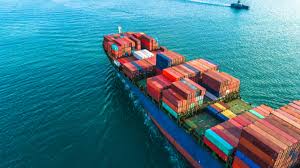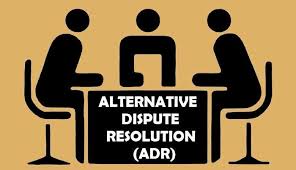WTO Contribution in establishing Rule Based Trading System
The World Trade Organization’s (WTO) pivotal role in establishing a rules‑based global trading system, along with key case laws that showcase how its dispute settlement mechanism enforces and shapes that system:
1. WTO’s Foundation: Building a Rules-Based Trade Order
The WTO, which succeeded the General Agreement on Tariffs and Trade (GATT) in 1995, created a robust, legally binding multilateral trading framework. GATT laid the foundation by reducing tariffs and eliminating preferential barriers; the WTO expanded that further across goods, services (under GATS), and intellectual property.
Core principles such as Most-Favored-Nation (MFN) and national treatment ensure uniform treatment among trading partners and fairness domestically.
2. Dispute Settlement: The Engine of Predictability and Enforcement
The Dispute Settlement Understanding (DSU)
Adopted in the Uruguay Round, the DSU is essential to the WTO’s effectiveness—it mandates structured, binding, and timely procedures for resolving disputes among member states.
Unlike the GATT era—where rulings could be blocked by a single country—the DSU now allows automatic adoption of appellate decisions unless a consensus blocks rejection, making rulings far more enforceable.
Objectives of the WTO Dispute Mechanism
Security and predictability: By providing a dependable legal process, the WTO reduces unilateral action and encourages member compliance.
Equal access for all members, especially smaller or developing countries—actors who may have limited leverage elsewhere—can bring larger economies to justice through a neutral bully pulpit.
3. Landmark Case Laws Illustrating Rule Enforcement
a) Shrimp‑Turtle Case (1998)
Originating in 1994, this case saw countries like Malaysia and India challenge U.S. restrictions on shrimp imports, which aimed to protect turtles but discriminated based on importing country.
The WTO initially ruled against the U.S., condemning differential treatment. On appeal, however, the U.S. prevailed—because its policy no longer discriminated and was justified under GATT Article XX(g) (conservation) norms.
Significance: For the first time, the WTO recognized that process-based restrictions (how goods are produced) could be permissible if necessary and non-discriminatory—a pivotal step in balancing trade rules with environmental goals.
b) U.S.–Tuna II (Mexico) Case (DS381)
Mexico challenged labeling standards for “dolphin-safe” tuna in the U.S., arguing they unfairly discriminated and were more trade-restrictive than necessary.
The WTO panel and Appellate Body confirmed the U.S. measures violated certain provisions, yet also acknowledged environmental concerns. Over time, findings evolved—with final rulings recognizing such standards as acceptable under exceptions similar to the Shrimp‑Turtle line.
Significance: Established precedent that legitimate public policy objectives, like environmental protection, can justify trade constraints—so long as they’re applied fairly and proportionally.
c) SPS (Sanitary and Phytosanitary) Agreement Disputes
Multiple cases—including EC–Hormones, Japan–Agricultural Products, and Australia–Salmon—tested nations’ rights to impose health and safety measures under WTO rules.
Significance: Clarified that health standards must be backed by scientific evidence and cannot be arbitrary or disguised protectionism.
d) Agreement on Textiles and Clothing (ATC)
Phased out the restrictive Multi-Fibre Arrangement over a decade, culminating in 2005, and integrated textile trade fully into regular WTO rules.
Significance: This shift dismantled ad‑hoc quota regimes, expanding market access and aligning with rules-based tariff systems.
4. Recent Developments & India’s Role
The WTO continues to uphold security and predictability despite challenges like stalled appellate appointments, especially from the U.S
Just recently, a WTO panel ruled in favor of Indonesia in a biodiesel subsidy dispute with the EU, reinforcing enforcement even amid fact‑finding difficulties.
India continues to lead initiatives at the WTO, calling for a full restoration of the dispute settlement mechanism, along with differential treatment for developing nations.
5. Summary: WTO’s Contribution to Rule-Based Trade
| Key Domain | Contribution of the WTO & DSU |
|---|---|
| Framework & Principles | Established bound rules (MFN, national treatment, tariff bindings) over services (GATS) and goods |
| Dispute Enforcement | Enforced rules via structured, binding dispute resolution mechanism |
| Balancing Trade & Policy | Allowed for public interest measures (environment, health) under strict conditions |
| Legal Certainty | Reduced unilateralism via predictive, enforceable legal rulings |
In Conclusion
The WTO, through its robust agreements and disciplined dispute settlement system, plays a foundational role in maintaining a predictable, fair, and enforceable global trading system. Landmark cases like Shrimp-Turtle and U.S.–Tuna II demonstrate how trade rules and public policy objectives reconcile via legal adjudication.






0 comments